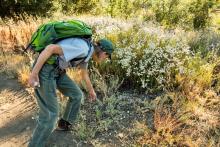Monitoring

Provides selected Monitoring resources from agencies and organizations with an interest in the prevention, control, or eradication of invasive species. Monitoring (surveillance) is an important part of controlling invasive species. Monitoring can identify new populations of invasive species while they are still small.
Spotlights
All Resources
Selected Resources
The section below contains highly relevant resources for this subject, organized by source.
